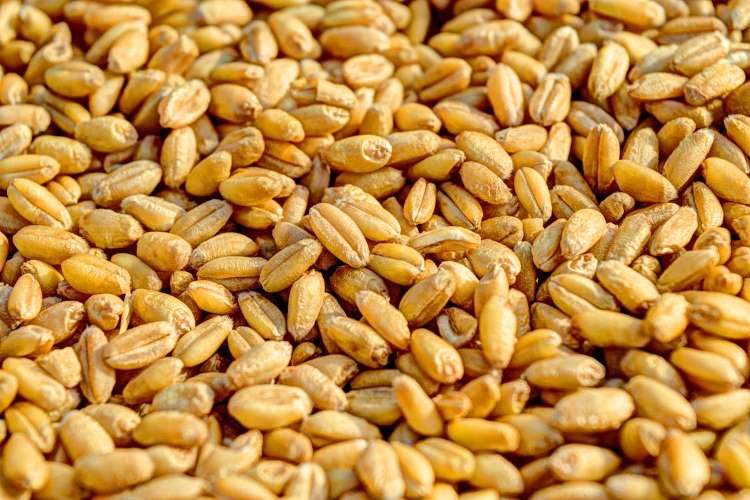
Foodgrain stocks plummet: India has reacted strongly to its poor ranking in the Global Hunger Index. The country is ranked 107 among 121 countries, behind its South Asian neighbours Sri Lanka (66), Myanmar (71), Nepal (81) Bangladesh (84), and Pakistan (99). The strong rejection of GHI that borders overreaction may have more to do with a clutch of domestic and global crises that threaten to derail the steady growth of Indian economy.
Amid a number of problems for the government is the depleting foodgrain stocks that have plunged to a five-year low. This is especially worrying at a time when the retail inflation for cereals have soared to a 105-month high in September. The latest data from the Food Corporation of India (FCI) states that wheat and rice stocks in public godowns totalled 511.4 lakh tonnes in October, compared with 816 lakh tonnes a year ago.
READ | Climate change: De-risking India’s banks, NBFCs for a sustainable future
Wheat stocks have slipped to a six-year low of 227.5 lakh tonnes, just above the minimum buffer reserve of 205.2 million tonne. The buffer stock is a three-month operational stock requirement with an additional strategic reserve to meet procurement shortfalls. However, rice stocks (inclusive of grain derived from un-milled paddy) are nearly thrice the necessary quantity. As a result, the overall cereal stocks position was relatively comfortable, even though FCI warehouses are holding less grain compared with the quantities four years ago.
Adding to the problem, there are concerns over the procurement target for paddy. There are concerns over paddy production during the kharif season which indicate a shortage of rice. The production of rice is likely to witness a fall of 6.05% compared with last year, according to the first estimate of food grain production released by the directorate of economics and statistics under the Union agriculture ministry. That translates into a deficit of 6.77 million tonne of rice in 2022-23.
The estimates shared above were taken before the heavy rains in the last week of September. The heavy rains in north India during September 22-23 have done even more damage to finished crops. Crops were particularly affected in Punjab and Haryana which together contribute heavily to the government stock.
READ | ‘Inflation threat overstated; India will continue to grow at steady pace’
Rising inflation, depleting foodgrain stocks
Wheat is the second most-produced grain in the world after corn and is also consumed widely as a staple for a variety of cuisines. The fall in foodgrain stocks has hit the country at a time when the government is already battling high consumer price inflation for cereals and products that soared to 11.53% in September. The inflation rate is at its highest annual value as per the current price index which has 2012 as base year.
Another major worry is that annual retail inflation for non-PDS (public distribution system) wheat and atta flour hit an all-time high of 17.41% in September, the highest in the last eight months. Only the next crop could provide some respite, but it would reach the markets only in mid-March next year. Possibilities for the price to ease are hence limited.
The geopolitical tension is another cause of worry. The escalating war in Ukraine has led to a renewed surge in prices. In 2019, Russia and Ukraine together accounted for more than a quarter (25.4%) of the world’s wheat. The ongoing war between these two nations has majorly impacted the global wheat supplies.
The export price of Russian wheat has gone up in the last one month, according to the US Department of Agriculture’s latest world grain trade report. The prices of wheat from the European Union, Australia, Canada, Argentina, and the US also have risen. If the government looks for imported wheat, ocean freight and shipping insurance takes the landed cost even higher.
The challenges ahead
The government is waiting to procure paddy, but the farmers are still waiting for the crop to dry after the rains. The government agencies do not buy paddy if there is more moisture than the prescribed level. Paddy procurement can, hence, pose a great challenge for both the Union and state governments. A similar pattern was observed with wheat procurement this year. The wheat procurement target for rabi season 2022-23 was 44.4 million tonnes, but the government could only buy 18.79 million tonnes, less than half of the target. A decrease in wheat production due to severe unseasonal heat in March-April was the culprit.
The government recently extended the scheme to provide free ration to about 798.5 million families under the Pradhan Mantri Garib Kalyan Yojana till December 2022. Under this, the government is obliged to distribute 11.96 million tonnes of foodgrain (2.1 million tonnes of wheat and 9.86 million tonnes of rice) between October and December. However, with procurement being stopped, there is no possibility of increasing wheat stock.
The government had announced a ban on wheat exports in May after domestic prices rose to record highs. This led to a 200% increase in wheat flour exports between April and July. The government had to clamp down on exports of wheat flour, maida, semolina and wholemeal atta to bring down prices. The government also banned the export of broken rice in September along with a 20% duty on other grades of rice.

